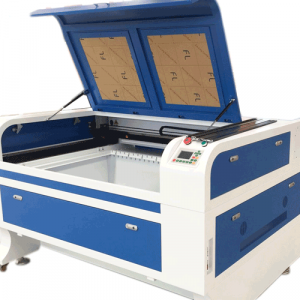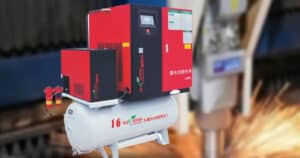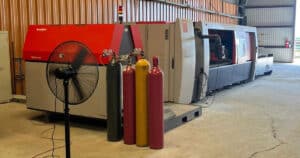The laser power and energy meter are mainly used to measure the output of the laser power. Regardless of whether the light emission comes from a weak light source (such as fluorescence) or a high-energy pulsed laser, power, and energy meters are indispensable tools in a variety of application environments such as laboratories, production departments, or work sites.
Although laser power meters and energy meters are provided separately, with the development of general-purpose instrument panels or display devices capable of a large number of different types of optical sensors, they are also collectively referred to as a single type of instrument-power and energy meters. The laser power meter is generally composed of a thermopile or a photodiode. The thermopile is used to measure high power, and the photodiode is used to measure low power. The energy meter is composed of pyroelectric materials, which respond to pulse signals. Among them, the film layer that converts laser power into heat plays a very important role and is the core technology of laser power or energy meter.
The reaction time of the thermopile power meter is relatively slow, which is determined by its principle. The response time of the thermopile power depends on the heat transfer time required for the heat generated by the laser to be absorbed by the film on the surface of the power meter to transfer to the edge of the power meter disc. The greater the measurement power, the larger the diameter of the detection disc is generally required. For larger power meter probes, the time required for heat transfer is on the order of seconds, so the response time required by the superpower meter is also longer. Of course, there are also some specially designed thermocouple structures. The direction of measuring heat transfer is consistent with the direction of the laser. The thermocouple in this direction is made very thin and on the order of micrometers, which greatly reduces the time required for heat transfer. The thermal response time drops below milliseconds.
The laser probe is an absorber coated with thermoelectric material. The thermoelectric material absorbs most of the light energy and converts it into heat, and only a small part of it reflects. The ratio of absorption to reflection is related to the spectral response curve of the material. The heat storage body of the absorber and its thickness determine the speed of heat transfer to the probe and the reaction time. The temperature change of the probe can generate current, and the current is transformed into a voltage signal and transmitted through the sheet ring resistance.
The purpose of power meter calibration is to calibrate its own measurement accuracy to ensure that the measured value is within the error range of the power meter usage report, so as to ensure the normal use accuracy of the power meter. The power meter is calibrated with a third-party power meter. According to the factory calibration report, different powers are used to verify the accuracy and stability of the actual calibration of the power meter without damaging the power meter.
Power measurement is a process of obtaining the true value of power based on system and random errors, and there is a certain power uncertainty. For power measurement, there are two types of power, one is accuracy, the deviation between the measured value and the true value; the other is power stability, the range of power fluctuations measured repeatedly under the same condition. Specifically, the power meter can measure continuous wave (CW) or repetitive pulse light sources, and the sensors used are usually thermopiles or photodiodes. Energy meters are usually used to measure pulsed lasers, that is, single-pulse or repetitively pulsed light sources. The sensors used include pyroelectrics, thermopiles, or photodiodes with circuits specially designed for measuring pulsed light sources.
Principle of photodiode power meter
The core part of the photodiode is a PN junction. When an appropriate reverse voltage is applied to the PN junction, no current flows through the PN junction due to lack of carriers. When photons irradiate the PN junction, the electrons or holes get rid of the constraints and form photo-generated carriers in the PN junction. The photo-generated carriers drift under the action of the electric field to form a current. The magnitude of the current and the energy of the incident light are Proportion. The photodiode is based on the photoelectric effect, which has a fast response time but is also prone to current saturation, and can only measure very small power.
Principle of pyroelectric energy meter
When the pyroelectric crystal is heated, the crystal will be polarized, so that polarized charges are generated at both ends of the crystal, and a metal layer is plated on both ends of the crystal to form a capacitor. Then, under the action of the temperature gradient, the polarized charge gathers at both ends of the capacitor to generate a voltage signal. The voltage signal is proportional to the temperature gradient formed by the heat converted by light absorbed by the detector film.
The pyroelectric probe is not suitable for detecting continuous or long pulse width laser, because the stored charge of the capacitor is easy to saturate or the capacitor only responds to AC or pulse signals.







